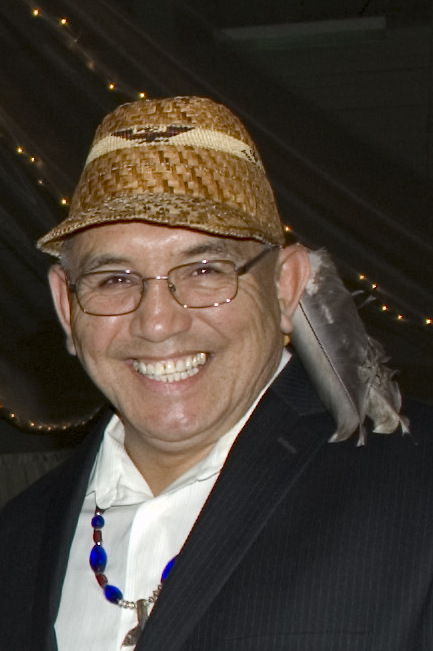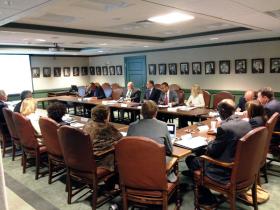Tribal leaders are skeptical of a proposal by Gov. Jay Inslee to set new water-quality standards.
By Lynda V. Mapes, Seattle Times, July 21, 2014
Some tribal leaders and environmental groups say a water-pollution cleanup plan proposed by Gov. Jay Inslee this month is unacceptable because while it tightens the standards on some chemicals discharged to state waters, it keeps the status quo for others.
Inslee is drafting a two-part initiative to update state water-quality standards, to more accurately reflect how much fish people eat, and to propose legislation to attack water pollution at its source. The fish-consumption standards have the effect of setting levels for pollutants in water: The more fish people are assumed to eat, the lower the amount of pollution allowed.
Inslee decided that lowering some standards wouldn’t create a big-enough benefit to human health to justify the economic risk for businesses, said Kelly Susewind, water-quality program manager for the state Department of Ecology.
“The realistic gains on the ground didn’t warrant that concern and disincentive to invest in our state,” Susewind said.
That’s because the rules regulate state permits for dischargers, such as industrial manufacturers and wastewater-treatment plants — but that isn’t where most of the pollution is coming from.
Setting tougher standards for some pollutants would also result in levels too low to detect or manage with existing technology — but would create a regulatory expectation that could cloud future business investment, Susewind said.
“The concern is that we set in motion a chain of events where it is inevitable they can’t comply. If they are worried they will cease to invest in 30 years, they are not going to invest today; that is the long-term picture that caused the uncertainty.”
In the case of PCBs — polychlorinated biphenyls, industrial chemicals used as coolants, insulating materials, and lubricants in electric equipment — setting a limit below the existing limit of 170 parts per quadrillion wouldn’t improve people’s health, Susewind said. That’s because most PCBs are entering waterways from other sources, including runoff. “It is not the most effective place, to put the pinch on dischargers,” Susewind said.
The problem is that the Clean Water Act, under which the standards are issued, doesn’t reach beyond so-called point sources: pollution in water discharged from pipes by industries and others regulated by Ecology and the federal Environmental Protection Agency (EPA).
“A lot of our challenge is finding ourselves with only one tool,” said Carol Kraege, who leads toxics reduction at Ecology. “Getting toxics out of our water with just the Clean Water Act is not enough.”
To gain new tools to clean up state waters, Inslee has asked Ecology to put together legislation to expand its authority to ban certain chemicals, to keep them from getting in the water in the first place. The legislation, which is still being drafted, is intended to address so-called non-point sources of pollution.
The governor has said he won’t submit a final water-quality rule to the EPA for approval until after the legislature acts.
Christie True, director of King County Natural Resources and Parks, which runs the county’s wastewater-treatment plants, said she was encouraged by the governor’s approach. “We have to be focused on outcomes,” True said.
“The thing I was really happy about was he said we can’t just rely on regulating the same old sources if we want to improve water quality. I know it is going to be very challenging to take these issues to the Legislature, but that is where we need to head to have a better outcome.”
The debate now under way arose from the state’s need to update the water-quality standards that address health effects for humans from eating fish. The state’s rules today assume a level of consumption so low — 6.5 grams a day, really just a bite — that it is widely understood to be inadequately protective, especially for tribes and others who eat a lot of fish from local waters.
The standard also incorporates an incremental increase in cancer risk in that level of consumption.
Inslee has proposed greatly increasing the fish-consumption standard in the new rule, to 175 grams per day, a little less than a standard dinner serving. But he also upped the cancer risk, from 1 in 1 million under current law, to 1 in 100,000 in the new standard. That was to avoid imposing tighter standards for some pollutants.
That isn’t good enough for tribal leaders who say they want tougher protection now — for all pollutants, not just some. “Holding the line isn’t good enough,” said Dianne Barton, water-quality coordinator for the Columbia River Intertribal Fish Commission.
Counting on the Legislature to grant new authority to Ecology and money to back it up is also a shaky proposition, some said. “That is a big gamble,” said Chris Wilke, executive director of Puget Soundkeeper, a nonprofit environmental group that sued the EPA to force Washington to update its standards. Delay, meanwhile, “is more business as usual,” Wilke said.
Brian Cladoosby, chairman of the Association of Washington Tribes and the Swinomish Indian Tribal Community, said tribes are going to take their case directly to the feds both at Region 10 EPA and in the EPA administrator’s office in Washington, D.C., and insist no change be made in the cancer risk.
“In our minds, the bar hasn’t moved that much,” Cladoosby said. “It took 100 years to screw up the Salish Sea; hopefully, it won’t take another 100 years to clean it up. But we have to start somewhere.”







